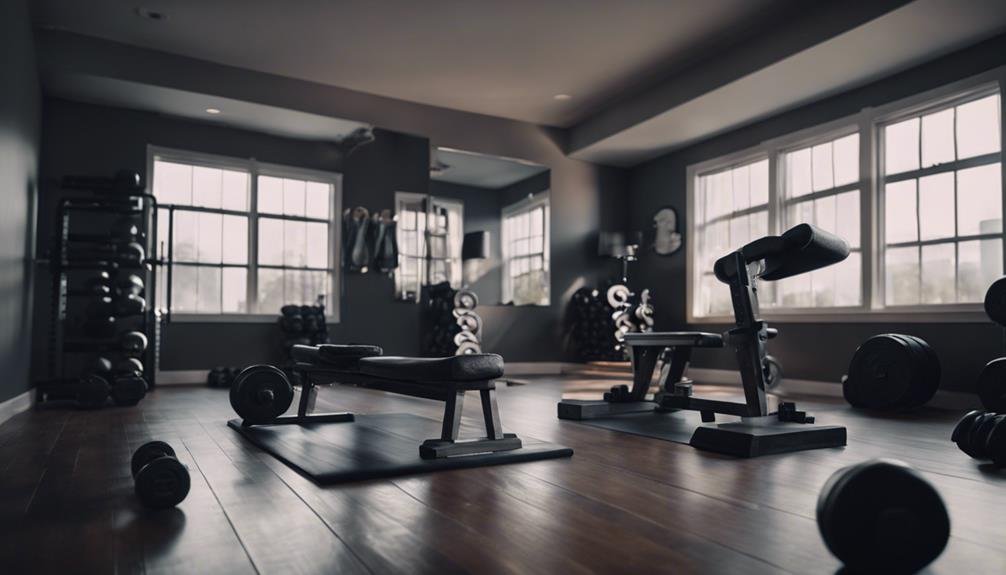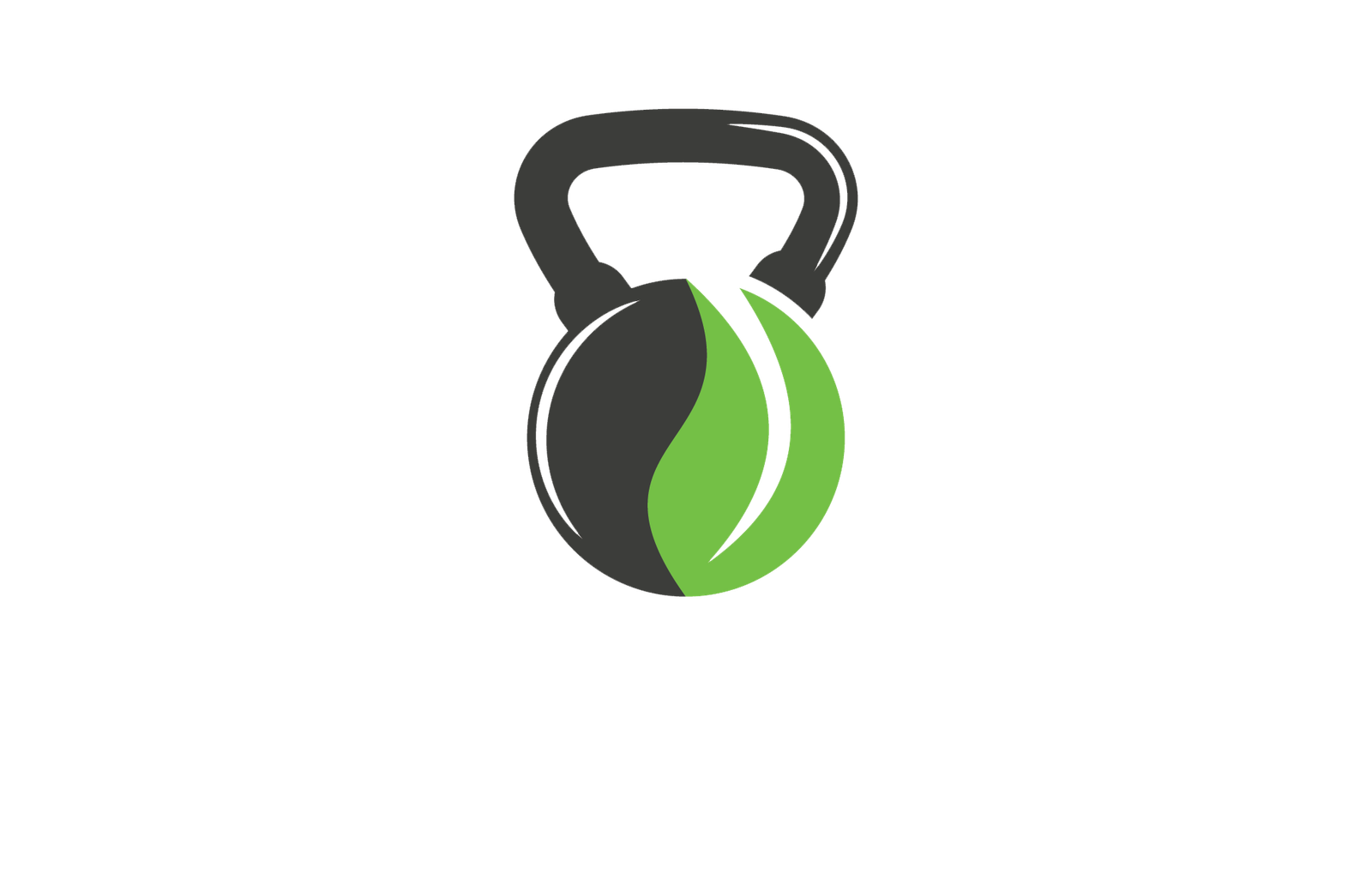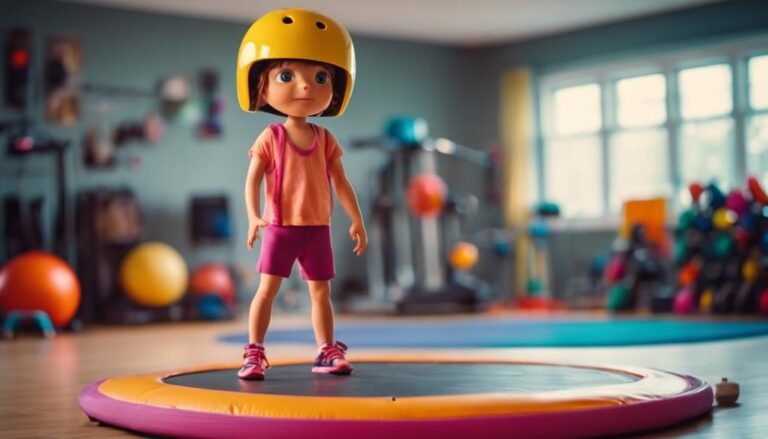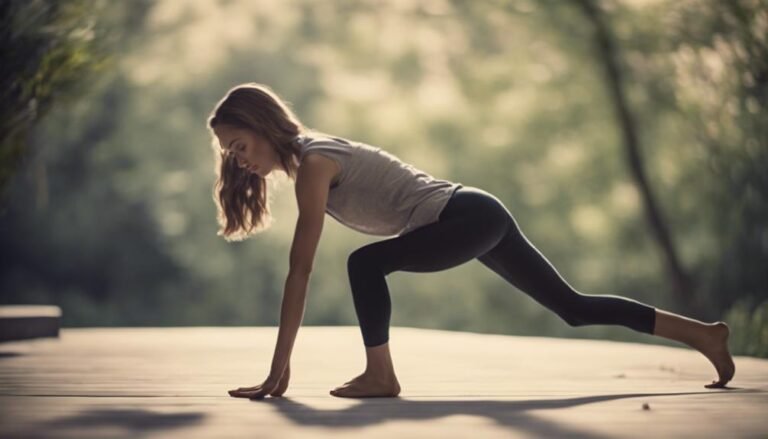Don't miss our holiday offer - 20% OFF!

Dumbbell Strength Training Workouts for Home
Gain a strong foundation in the comfort of your own home with these expert-approved dumbbell strength training workouts designed to transform your physique.
We're taking the first step towards building a stronger, healthier, and more resilient physique by harnessing the transformative power of dumbbell strength training in the comfort of our own homes. With the right equipment and exercises, we can increase muscle mass, enhance athletic performance, and prevent injuries. By mastering fundamental exercises, incorporating progressive overload, and focusing on proper form, we can achieve a toned physique. From building chest strength to strengthening our core, we'll explore essential dumbbell exercises and create a solid foundation for a home gym. As we embark on our fitness journey, we'll uncover the secrets to a stronger, more balanced physique.
Key Takeaways
- Prioritize space optimization for a functional and efficient home gym, investing in essential equipment like dumbbells and a thoughtful selection of exercises.
- Master fundamental exercises like dumbbell chest presses, tricep kickbacks, and bent over rows to build overall strength and power.
- Incorporate warm-up and stretching routines, including 5-10 minutes of light cardio and dynamic stretching, to prevent injuries and increase flexibility.
- Focus on proper form and technique, starting with a comfortable weight and gradually increasing the load, to achieve effective exercises and avoid injuries.
- Track progress and set specific goals, using tools like fitness journals or mobile apps, to stay motivated and focused on the fitness journey.
Benefits of Dumbbell Workouts
Incorporating dumbbell workouts into our fitness routine can yield a multitude of benefits, from increased muscle mass and bone density to enhanced athletic performance and everyday functional strength. As we begin our fitness journey, we're not just building physical strength, but also mental toughness. By consistently challenging ourselves with progressive overload, we're able to push past plateaus and achieve continuous progress. Additionally, dumbbell workouts help develop muscle memory, allowing us to perform everyday tasks with more ease and efficiency. A well-structured workout routine incorporating dumbbells can also play a vital role in injury prevention, as it strengthens our stabilizer muscles and improves overall joint stability. By incorporating dumbbells into our workout routine, we're investing in a stronger, healthier, and more resilient version of ourselves. As we continue to challenge and push ourselves, we'll be amazed at the transformative power of dumbbell strength training.
Essential Dumbbell Exercises
Now that we've covered the benefits of dumbbell workouts, we're ready to explore the essential exercises that will help us achieve our strength training goals. We'll start by focusing on exercises that target our chest, as well as compound lifts that work multiple muscle groups at once. By mastering these fundamental exercises, we'll be well on our way to building strength and achieving a more toned physique.
Dumbbell Chest Exercises
We'll target our pectoralis major muscle with these essential dumbbell chest exercises, which are fundamental for building a strong and balanced upper body. Our chest muscles, specifically the pectoralis major, play a pivotal role in everyday activities and athletic performances. To achieve peak pec development, we'll incorporate workout variations that challenge our chest muscles from different angles.
Incorporating dumbbell exercises into our workout routine helps prevent muscle imbalance, which can lead to injuries and poor posture. We'll focus on exercises that work the chest muscles, such as dumbbell presses, dumbbell flyes, and dumbbell pullovers. These exercises will help improve our overall chest development, enhancing our overall athletic performance and daily functioning.
To continue making progress and avoiding plateaus, we'll incorporate progressive overload by gradually increasing the weight or reps over time. By incorporating these essential dumbbell chest exercises into our workout routine, we'll build a stronger, more balanced upper body that's capable of tackling daily tasks and athletic challenges with confidence.
Compound Dumbbell Lifts
As we move beyond chest exercises, we're going to tackle compound dumbbell lifts that work multiple muscle groups at once, amplifying the effectiveness of our workout routine. These exercises are vital for building overall strength and power. Compound lifts, such as squats, lunges, and deadlifts, engage multiple joints and muscle groups simultaneously, promoting muscle integration and power development.
Performing compound exercises with dumbbells is a great way to improve our overall strength, as they challenge our stabilizer muscles and promote functional strength. By incorporating exercises like dumbbell squats, lunges, and deadlifts into our routine, we can develop strength that translates to everyday life and athletic performance.
When performing compound dumbbell lifts, proper form and technique are crucial to avoid injury. Start with lighter weights and gradually increase the load as we build strength and confidence. By incorporating these exercises into our workout routine, we can develop the strength, power, and muscle integration needed to take our fitness to the next level.
Building a Home Gym
Our home gym starts to take shape with a thoughtful selection of essential equipment, including a few must-have dumbbells that will form the backbone of our strength training routine. When building a home gym, we prioritize space optimization to facilitate a functional and efficient workout area. This involves careful planning of our gym layout, taking into account the equipment we need and the space we have available. Budget planning is also vital, as we need to allocate our resources wisely to get the most out of our investment. We focus on equipment prioritization, identifying the essential items that will provide the greatest benefit to our workout routine. By doing so, we're able to create a well-rounded and effective home gym that meets our strength training needs. With a solid foundation in place, we're ready to take our workouts to the next level.
Warm-Up and Stretching Routines
Before we start lifting, it's imperative to prepare our bodies with a well-structured warm-up and stretching routine to prevent injuries and maximize the effectiveness of our strength training exercises. A good warm-up gets our hearts rate up, increases blood flow, and prepares our muscles for the upcoming exercise. We like to start with 5-10 minutes of light cardio, such as jogging in place or jumping jacks. This gets our muscles warm and ready for the weightlifting to come.
Next, we move on to dynamic stretching, which helps increase flexibility and range of motion. We focus on exercises that mimic the movements we'll be doing during our workout, such as arm circles and leg swings. This helps with muscle activation, ensuring that our muscles are firing properly and reducing the risk of injury. A well-structured warm-up and stretching routine is key to injury prevention and maximizing our strength training results. By taking the time to properly prepare our bodies, we set ourselves up for success and can focus on pushing ourselves to new heights.
Chest and Tricep Exercises
We're now ready to tackle the chest and tricep exercises that form the foundation of a well-rounded upper body strength training routine. These exercises will help us build strength, increase muscle mass, and improve overall athletic performance. Let's start with the chest exercises. The dumbbell chest press is a great exercise for building chest strength. To perform this exercise, we'll lie on our back with our knees bent and feet flat on the floor, holding a dumbbell in each hand. We'll press the dumbbells upwards, extending our arms fully, then lower them back down to the starting position. Aim for 3 sets of 8-12 reps.
Next, we'll move on to tricep exercises. The tricep kickback is an effective exercise for targeting the triceps. To perform this exercise, we'll hold a dumbbell in one hand, bend our knees slightly, and lean forward at the hips. We'll bend our elbow to 90 degrees, then straighten our arm, extending it behind us. We'll aim for 3 sets of 12-15 reps on each arm. Remember to start with a weight that feels comfortable and gradually increase the weight as we build strength.
Back and Bicep Exercises
As we move on to targeting our back and biceps, we'll focus on exercises that promote strength and muscle growth. We'll start by discussing bent over rows, which effectively work multiple muscle groups in our upper back. Next, we'll explore variations of bicep curls and rowing motions that will help us achieve a stronger, more balanced physique.
Bent Over Rows
Performing bent over rows with dumbbells targets our latissimus dorsi, trapezius, and biceps, effectively strengthening our back and arm muscles. We're excited to incorporate this exercise into our home workout routine, as it's a great way to improve our overall strength and muscle tone.
To get the most out of this exercise, we need to focus on proper rowing form. This means keeping our back straight, engaging our core, and avoiding any swinging or jerking motions. We should also be mindful of common rowing injuries, such as strains to the back or shoulders, which can occur if we're not careful.
Here are some key tips to keep in mind when performing bent over rows:
- Start with a weight that feels comfortable, and gradually increase the weight as we build strength.
- Keep our elbows close to our body, avoiding any wide or sweeping motions.
- Focus on squeezing our shoulder blades together as we lift the dumbbells, rather than just lifting with our arms.
Bicep Curl Variations
By incorporating bicep curl variations into our strength training routine, we can target our biceps from different angles, ensuring a more thorough workout for our arms. This is essential because bicep anatomy reveals that our biceps are comprised of two heads, requiring diverse exercises to fully engage them.
| Bicep Curl Variation | Description |
|---|---|
| Hammer Curl | Targets the outer bicep head, promoting muscle isolation and balance in our arms. |
| Preacher Curl | Focuses on the lower bicep, improving curl form and grip strength. |
| Alternating Dumbbell Curl | Enhances muscle memory through exercise progressions, ensuring training consistency.
Rowing Motions
We utilize rowing motions to target our back and biceps simultaneously, maximizing efficiency in our strength training routine. This exercise allows us to work multiple muscle groups at once, making it a great time-saver. Rowing benefits include improved posture, increased muscle mass, and enhanced overall strength.
When performing rowing exercises, focus on proper form and muscle isolation. This means engaging our core, squeezing our shoulder blades together, and keeping our elbows close to our body. By doing so, we can verify that we're targeting the correct muscles and avoiding injury.
Three key tips to keep in mind when incorporating rowing motions into our workout routine:
- Start with lighter weights: Focus on proper form and technique, especially when targeting multiple muscle groups at once.
- Maintain core engagement: This will help stabilize our body and maintain proper form throughout the exercise.
- Focus on slow and controlled movements: This will help us maintain muscle isolation and avoid relying on momentum to lift the weights.
Shoulder and Abs Exercises
Using dumbbells to target our shoulder muscles can help improve overall posture, reduce injury risk, and enhance athletic performance. We can achieve this by focusing on exercises that engage our shoulder stabilizers, which are the muscles responsible for maintaining proper shoulder alignment and preventing injuries.
Here are some effective dumbbell exercises that target our shoulder muscles and engage our abs:
| Exercise | Description |
|---|---|
| Dumbbell Lateral Raises | Hold dumbbells at sides, raise to shoulder height, and lower back down |
| Dumbbell Front Raises | Hold dumbbells in front of thighs, raise to shoulder height, and lower back down |
| Dumbbell Arnold Press | Hold dumbbells at shoulder height, press upwards, and lower back down |
| Plank with Dumbbell Row | Hold a plank position, hold a dumbbell in each hand, and row the dumbbells to the sides |
| Dumbbell Side Plank | Hold a side plank position, hold a dumbbell in the top hand, and lift the dumbbell to the top shoulder |
Leg and Glute Exercises
As we shift our focus to leg and glute exercises, we're excited to explore the benefits of building strong, toned legs and glutes. We'll discuss how to work our way up to glorious glutes and strong legs, and how to tone our thighs with effective dumbbell exercises. By the end of this section, we'll be well on our way to achieving strong, balanced lower bodies.
Glorious Glutes
Building strong, toned glutes is essential for athletic performance, balance, and overall lower body strength, and dumbbells provide an effective way to target these hard-to-reach muscles. We can't emphasize enough the importance of glute activation and booty building in our workouts. Weak glutes can lead to poor posture, lower back pain, and even knee injuries.
To get started, we'll focus on exercises that target the gluteus maximus, the largest muscle in our buttocks. Here are three essential exercises to add to our routine:
- Dumbbell Glute Bridges: Lie on our back with knees bent and feet flat, holding a dumbbell over our hips. Lift our hips up towards the ceiling, squeezing our glutes at the top.
- Dumbbell Step-Ups: Hold a dumbbell in each hand and perform step-ups, focusing on squeezing our glutes with each step.
- Dumbbell Donkey Kicks: Start on all fours, holding a dumbbell in one hand. Lift one leg up and back, squeezing our glutes at the top.
Strong Legs First
Targeting our legs and glutes with dumbbells helps us develop strength, power, and overall athletic performance, while also reducing our risk of injury and improving our overall lower body development. By incorporating leg exercises into our workout routine, we can achieve better muscle balance and overall leg development. This is essential, as strong legs provide a solid foundation for our entire body. When our legs are strong, we're more stable, agile, and better equipped to tackle daily tasks and athletic pursuits.
To achieve ideal leg development, we'll focus on exercises that target our quadriceps, hamstrings, and glutes. Squats, lunges, and deadlifts are essential exercises that work multiple muscle groups at once. By incorporating these exercises into our routine, we'll build strength, power, and endurance in our legs. Additionally, we'll improve our balance, coordination, and overall athleticism. With dumbbells in hand, we're ready to take the first step towards stronger, more resilient legs.
Toned Thighs Ahead
We'll start sculpting toned thighs and glutes with a combination of exercises that hit our quadriceps, hamstrings, and gluteus maximus from different angles. Understanding thigh anatomy is fundamental to target these areas effectively. Our quadriceps, located at the front of our thigh, work in tandem with our hamstrings at the back to provide stability and balance. However, muscle imbalance can occur when one group is stronger than the other, leading to poor posture and increased risk of injury.
To avoid this, we'll focus on exercises that work multiple muscle groups simultaneously. Here are three essential exercises to include in our routine:
- Dumbbell Squats: Works quadriceps, hamstrings, and glutes
- Dumbbell Lunges: Targets quadriceps, hamstrings, and gluteus maximus
- Dumbbell Deadlifts: Engages quadriceps, hamstrings, glutes, and core muscles
Core Strengthening Exercises
With a strong core, we can generate more power and stability in our workouts, which is why incorporating core strengthening exercises into our dumbbell routine is essential for overall athletic performance. A strong core provides the foundation for efficient movement and helps prevent injuries. We'll focus on exercises that improve core stability, which is critical for maintaining good posture, balance, and overall athletic performance.
Let's start with pelvic tilts, an excellent exercise for engaging our transverse abdominis muscle. Lie on your back with your knees bent and feet flat on the floor. Tilt your pelvis upwards and then back down again, repeating for 10-15 reps. This exercise helps improve core stability and reduces lower back strain. Next, we'll move on to plank variations, which target our entire core, including our abs, obliques, and lower back. By incorporating these exercises into our routine, we'll improve our overall core strength, stability, and athletic performance.
Full-Body Workout Routines
As we explore full-body workout routines, we're excited to focus on exercises that target our entire physique. We'll examine routines that prioritize upper body strength, building powerful chests, backs, and shoulders. Additionally, we'll discuss lower body emphasis, creating strong legs, glutes, and calves that will get us moving and feeling powerful.
Upper Body Focus
By targeting our upper body, we can improve overall athletic performance and enhance everyday functioning. A strong upper body is essential for everyday activities, such as lifting groceries or carrying children. Additionally, it's vital for athletes who engage in sports that involve pushing, pulling, or throwing.
When it comes to upper body anatomy, we need to focus on exercises that target our chest, back, shoulders, and arms. A well-balanced upper body workout routine can help alleviate muscle imbalances, which can lead to injuries and poor posture.
Here are three essential exercises to include in our upper body workout routine:
- Dumbbell Chest Press: Works our chest muscles, improving overall upper body strength.
- Dumbbell Bent-Over Row: Targets our back muscles, enhancing posture and reducing muscle imbalances.
- Dumbbell Bicep Curl: Develops our arm strength, essential for everyday activities and athletic performance.
Lower Body Emphasis
We shift our focus to the lower body, recognizing that strong legs and glutes are essential for overall athletic performance, balance, and everyday functional movements. A well-rounded lower body workout routine can greatly benefit our overall fitness and reduce the risk of injuries. When it comes to building strong legs and glutes, we can't neglect our calf muscles. Calf Raises are an effective exercise to target these muscles, improving ankle mobility and foot strength. Weak calf muscles can lead to poor lower body alignment, increasing the risk of shin splints and other injuries. By incorporating exercises that target our calf muscles, we can improve our overall lower body strength and reduce our risk of injury. Additionally, exercises that target our glutes and legs, such as squats and lunges, can help improve our balance and overall athletic performance. By incorporating these exercises into our workout routine, we can build strong, stable legs that will benefit us in all aspects of our fitness journey.
Creating a Workout Schedule
To maximize the effectiveness of our dumbbell strength training program, let's set a realistic and achievable workout schedule that suits our lifestyle and fitness goals. Consistency matters, and having a well-planned schedule helps us stay committed to our workout routine.
Workout planning involves creating a fitness calendar that outlines our exercise routine, including the days and times we'll work out, as well as the specific exercises and sets we'll complete. By doing so, we can establish scheduling habits that become second nature, ensuring we make time for our workouts despite our busy schedules.
Here are three essential considerations when creating our workout schedule:
- Set specific goals: Identify our fitness objectives, whether it's building muscle, increasing endurance, or enhancing overall health.
- Choose a consistent schedule: Decide on a workout routine that we can realistically stick to, considering our daily and weekly commitments.
- Allow for rest days: Make sure to include rest days in our schedule to allow our muscles to recover and rebuild, which is crucial for progress and avoiding injuries.
Tips for Beginners
As beginners, we're likely to encounter common mistakes that can hinder our progress, but being aware of these pitfalls can help us avoid them and set ourselves up for success. One major hurdle is Gym Intimidation. We've all been there – feeling overwhelmed by the unfamiliar equipment and seasoned gym-goers. But, we've chosen to start on a Fitness Journey from the comfort of our own homes, eliminating that intimidation factor.
| Common Mistake | Why it Hinders Progress | Solution |
|---|---|---|
| Unrealistic Expectations | Leads to disappointment and burnout | Set achievable Fitness Goals, celebrate small wins |
| Poor Form | Increases risk of injury, slows progress | Invest in a Personal Trainer or online tutorials |
| Lack of Consistency | Frustrates progress, makes it hard to stay motivated | Create a Workout Mindset, schedule workouts and stick to them |
Progress Tracking and Goal Setting
Tracking our progress and setting specific, measurable goals is essential to staying motivated and focused on our fitness journey. By monitoring our progress, we can identify areas that need improvement and make adjustments to our workout routine accordingly. This helps us stay on track and motivated to reach our fitness goals.
To effectively track our progress, we can use various tools such as fitness journals or mobile apps. These tools allow us to log our workouts, track our progress, and set specific goals. For example:
- Log our workouts: Write down the exercises, sets, reps, and weight used in each workout.
- Track our progress: Take progress photos, measurements, or track our body fat percentage.
- Set specific goals: Define achievable goals, such as increasing our squat by 10 pounds in 6 weeks.
Common Mistakes to Avoid
We've all been there – enthusiastically starting a new workout routine only to sabotage our own progress with common mistakes that can hinder our results. One major mistake we often make is overtraining. We get excited about our new routine and push ourselves too hard, ignoring the signs of overtraining symptoms like fatigue, insomnia, and decreased performance. This can lead to workout plateaus, where we stop seeing progress and get discouraged.
Another mistake is not listening to our bodies. We ignore the aches and pains, thinking we just need to 'toughen up.' But neglecting to rest and recover can lead to injuries, which can set us back weeks or even months. We also tend to focus too much on the exercises we enjoy, neglecting other important muscle groups. This can lead to imbalances and increased risk of injury.
Lastly, we often don't mix up our routine enough, doing the same exercises in the same order every time. This can lead to boredom and plateaus. By being aware of these common mistakes, we can take steps to avoid them and guarantee our workout routine remains effective and enjoyable.
Staying Motivated at Home
Let's face it: staying motivated to work out at home can be tough, especially when there's no gym buddy or personal trainer to hold us accountable. But, we can't let that stop us from reaching our fitness goals. To stay motivated, we need to create our own accountability system.
Here are three ways to do just that:
- Schedule it in: Treat our workouts like any other non-negotiable appointment and write them down in our calendars.
- Track our progress: Keep a workout log or use a fitness app to track our progress, which helps us stay motivated by seeing how far we've come.
- Reward ourselves: Set small rewards for reaching our milestones, which gives us something to look forward to and helps us stay motivated.
Frequently Asked Questions
Can I Use Dumbbells if I Have Wrist or Elbow Injuries?
To modify exercises, we recognize that wrist or elbow injuries can be a concern when using dumbbells. To adapt exercises, suggest reducing weight, using lighter dumbbells, and focusing on pain management through injury modifications to guarantee a safe workout.
How Do I Choose the Right Dumbbell Weight for My Fitness Level?
When choosing the right dumbbell weight, we consider our fitness goals and muscle type. We select a weight that allows us to complete our desired reps with proper form, yet still challenges us to achieve our goals.
Can I Do Dumbbell Exercises While Sitting Down or in a Chair?
"We've all been there – a million times when we wished we could exercise while sitting down! Fortunately, yes, we can do dumbbell exercises while seated or in a chair, incorporating chair variations and seated modifications to suit our fitness needs."
Do I Need to Warm up Before Doing Dumbbell Exercises at Home?
We always warm up before exercising to prevent injuries; it's essential. We incorporate dynamic stretching to get our muscles ready, increasing flexibility and reducing the risk of injury, ensuring a safe and effective workout.
Can I Use Dumbbells if I'm Pregnant or Have Recently Given Birth?
We recognize that exercising during pregnancy and postpartum requires caution. Before using dumbbells, it's recommended to consult our healthcare provider for personalized guidance on pregnancy modifications and postpartum recovery to guarantee a safe and healthy workout routine.
Conclusion
As we wrap up our guide to dumbbell strength training workouts for home, remember that consistency is key. Don't be like the ancient Greeks, who only exercised to prepare for war – make fitness a year-round battle. Set goals, track progress, and stay motivated to see real results. With persistence and patience, our home gym will become our happy place, where we can forge strong bodies and minds. So, let's get pumping and make every rep count!



